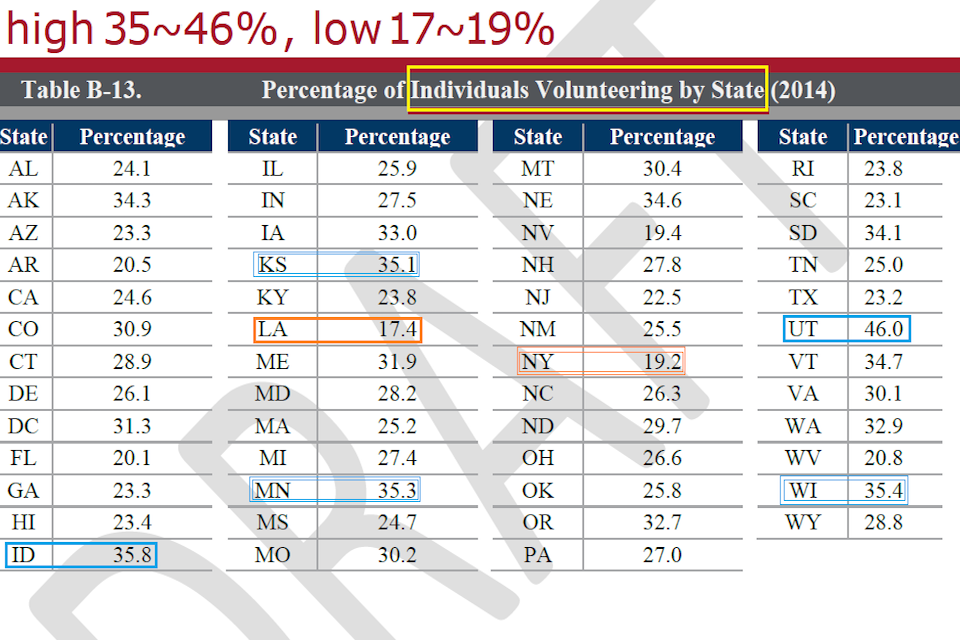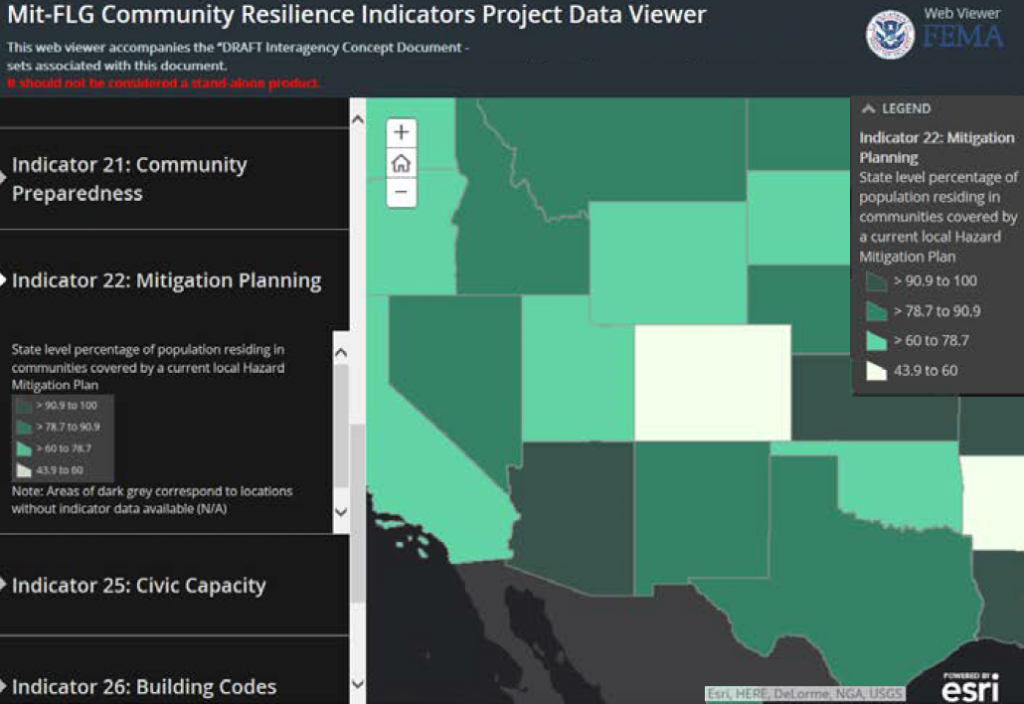03-6272-4372営業時間 9:00〜18:00
防災メディア

Measure Your Community Resilience
2017/10/10
The picture shows the 50 states of USA and the residents’ self-reported activity in a community organization during the month. Voluntary associations are one sign of community health because the people who interact outside of their household or workplace have wider and deeper networks to help others and also to receive help from others in times of disasters big or small. “Community resilience” is one of the 28 measurements proposed in the June 2016 PDF publication from FEMA and the MitFLG (Mitigation Framework Leadership Group), entitled [Draft] Interagency Concept for Community Resilience Indicators and National-Level Measures. A different view of local residents’ resilience measurement comes from the online resource, below.
The idea for this set of guidelines came from the 2012 National Research Council report, Disaster Resilience: A National Imperative. The report said that government offices at all levels, together with professional organizations, should make a framework that communities could use in their own situation and begin to measure their progress to reach the resilience goal. In Presidential Policy Directive #8 (National Preparedness and the National Preparedness Goal), “community resilience” means “the ability of a community to adapt to changing conditions, withstand disruption, and rapidly recover from emergencies.” Cities, counties, and townships can use the list of community resilience indicators from the 2016 PDF booklet to see their own strong and weak points and then make a plan to improve their situation.
The national government already raises the resilience in communities in all 50 states and territories in three ways: (1) money, services, standards and legal protections that go to the states and then to the local governments give support for housing, economic development, environmental protection, public health and safety. (2) Disaster risks are mitigated through research and surveys to advise people of potential dangers to mitigate, to make safety standards for construction and land development, and to reduce the dangers that could damage the community living conditions. (3) Disaster recovery (to restore the damaged land, buildings, and infrastructure) and redevelopment (to begin from scratch, replacing the old things with newer designs and capabilities). This federal support to local government and residents includes money to pay for high-priority projects that will mitigate the future hazards. Also the government can set the standards of rebuilding at a higher level than before the disaster, so the community resilience increases.
The 28 ways to measure a community’s overall level of resilience are listed in the PDF booklet, appendix B. They are grouped into 10 Core Capabilities. These include the natural and cultural resources of the place, the possible hazards and assessment of risk, the plans that are ready (or not), and the long-term reduction of vulnerabilities. These represent one half of the Core Capabilities. The other half includes housing conditions, the conditions of available services (both the health and the social services), the ability for economic recovery, the status of the community’s physical infrastructure, and finally, the indicators of resilience among the people living in a place (including the screenshot, above).
This document is marked “draft – published for stakeholder comment,” so probably there will be changes before the final edition is given to local governments and their community organizations to study and measure how much resilience they already have, and what more they can do to raise their ability to absorb and rebound from the disasters they face together.
サイエンスクラフトとは...
サイエンスクラフトは防災計画の作成や防災訓練支援を数十年に渡って行っているコンサル会社です。お問い合わせはこちらまで。





